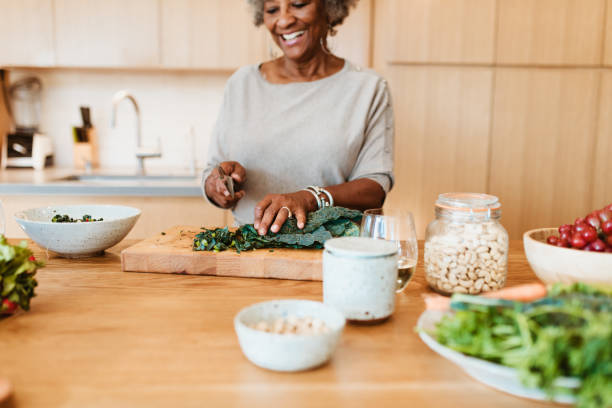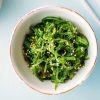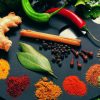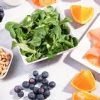- Empty cart.
- Continue Shopping
How to Choose Healthy Cooking Methods

Cooking is not just about preparing delicious meals; it’s also an opportunity to make healthy choices that benefit your overall well-being. The cooking methods you choose can significantly impact the nutritional value of your meals.
1. Grilling
Grilling is an excellent way to cook meats, vegetables, and even fruits while adding a smoky flavor without excessive fat. Here’s how to grill healthily:
- Choose Lean Proteins: Opt for lean cuts of meat, skinless poultry, or fish to reduce saturated fat intake.
- Marinate: Marinating meat and vegetables before grilling can add flavor and reduce the formation of potentially harmful compounds.
- Use Herbs and Spices: Season your grilled foods with herbs and spices instead of excessive salt or high-calorie sauces.
- Watch Cooking Time: Avoid overcooking to preserve nutrients and prevent the formation of harmful substances.
2. Baking and Roasting
Baking and roasting are dry-heat cooking methods that require little to no added fat. Here’s how to make them healthier:
- Limit Added Fats: Use minimal amounts of healthy fats like olive oil or cooking spray to prevent sticking and enhance flavor.
- Use a Rack: Elevating meat on a rack in a baking pan allows excess fat to drain away.
- Season Smartly: Enhance flavor with herbs, spices, and citrus rather than relying on excess salt or butter.
- Monitor Temperature: Cook at the right temperature and use a meat thermometer to avoid overcooking.
3. Steaming
Steaming is a gentle cooking method that helps retain nutrients and natural flavors. Here’s how to steam healthily:
- Choose Colorful Vegetables: Steam a variety of colorful vegetables to maximize the intake of vitamins, minerals, and antioxidants.
- Use a Steamer Basket: A steamer basket or bamboo steamer keeps food above the boiling water, preventing nutrient loss.
- Avoid Overcooking: Steam until vegetables are tender but still vibrant and crisp.
4. Sauteing and Stir-Frying
Sauteing and stir-frying are quick-cooking methods that require minimal fat. Here’s how to do them healthily:
- Use Healthy Oils: Opt for heart-healthy oils like olive oil or canola oil and use them sparingly.
- Prep Ingredients: Chop ingredients uniformly for even cooking and shorter cooking times.
- Add Vegetables First: Start with vegetables to allow them to cook through before adding proteins and sauces.
- Limit Sauces: Be mindful of sauce portions and opt for low-sodium options when possible.
5. Boiling and Simmering
Boiling and simmering are excellent methods for cooking pasta, grains, and certain vegetables. Here’s how to use them healthily:
- Use Minimum Water: Use only as much water as needed to submerge the food to minimize nutrient loss.
- Save Broth: If you’re boiling vegetables, save the nutrient-rich broth for soups or sauces.
- Time It Right: Cook pasta and grains until they are al dente to preserve texture and nutrients.
6. Microwaving
Microwaving is a convenient and quick cooking method that can be healthy if used correctly:
- Cover Food: Covering food with a microwave-safe lid or wrap helps trap steam and prevents drying out.
- Rotate and Stir: Rotate dishes and stir food regularly to ensure even cooking.
7. Poaching
Poaching involves gently simmering food in liquid, typically water or broth. Here’s how to poach healthily:
- Use Flavored Liquids: Enhance flavor by poaching in broth with herbs, spices, and aromatics.
- Control Temperature: Maintain a low, gentle simmer to prevent overcooking.
8. Slow Cooking (Crock-Pot)
Slow cooking is ideal for tenderizing tough cuts of meat and developing rich flavors. Here’s how to use a slow cooker healthily:
- Trim Fat: Remove excess fat from meat before placing it in the slow cooker.
- Add Vegetables: Include plenty of vegetables to boost nutrients and fiber.
9. Griddling (Flat-Top Grilling)
Griddling is an excellent method for cooking pancakes, burgers, and sandwiches. Here’s how to griddle healthily:
- Use Lean Proteins: Choose lean meats or plant-based alternatives for burgers.
- Choose Whole Grains: Opt for whole grain bread for sandwiches.
- Limit Added Fats: Use cooking spray or minimal oil to prevent sticking.
10. Sous Vide Cooking
Sous vide is a precise and gentle cooking method that involves vacuum-sealing food in a bag and cooking it in a water bath. Here’s how to use sous vide healthily:
- Use Lean Proteins: Sous vide is ideal for cooking lean meats like chicken breast or fish.
- Control Temperature: Set the water bath to the desired temperature for precise cooking.
- Finish with Searing: After sous vide cooking, sear meat in a hot pan for a flavorful crust.
In Conclusion, Choosing healthy cooking methods can make a significant difference in the nutritional quality of your meals. By opting for cooking techniques that preserve nutrients, limit added fats, and enhance natural flavors, you can create delicious and nutritious dishes that contribute to your overall well-being. Experiment with these methods to discover which ones you enjoy the most and incorporate them into your cooking routine for healthier meals.








